This is our third year tapping trees to make maple syrup, and each year when the sap begins to flow I am thrilled and amazed. To collect gallons of sap from trees growing in your own yard and turn it into delicious, pure syrup is truly an amazing experience—another everyday miracle on the farm. We’ve had so much fun over the years we even threw a tree-tapping party last year.
We’ve also had a lot of people interested in starting this hobby for themselves. I wrote this post to answer a lot of the questions we get asked about how to get started.
What you need and where to get it
As with everything, there are many ways to get the job done. This is just what I prefer, having found it to work reliably over the years:
- Battery-powered drill (or a really long extension cord)
- 7/16-inch drill bit – $8 at Menards
- 7/16″ Hookless Aluminum Spout – $3ea at Leader Evaporator
- Sap Sak Holder – $7ea at Leader Evaporator
(I have also seen these at Mills Fleet Farm for 1/2-price after the season is over) - Sap Sak – $0.55ea at Leader Evaporator
- Hammer
The bummer is that about the time you are interested in tapping maple trees, so is everyone else and many suppliers will be sold out for the season. So be sure to order your supplies well ahead of Maple Sugaring season (which usually means before March).
How to identify maple trees
Maple leaves are perhaps the most recognizable leaf in the world. It’s the only leaf that has it’s own national flag. But that won’t help you much in the middle of winter when there are no leaves. You’ll have to look at other things like bark and branches to get a clue.
There are four common types of maple trees for syrup production, and each one has it’s own identifying characteristics:
- Sugar Maple
- Silver Maple
- Red Maple
- Boxelder (yes, it’s a maple tree)
On our property, we have only Silver Maples. They are characterized by early buds on the tips of branches and wide, flat, silvery bark.
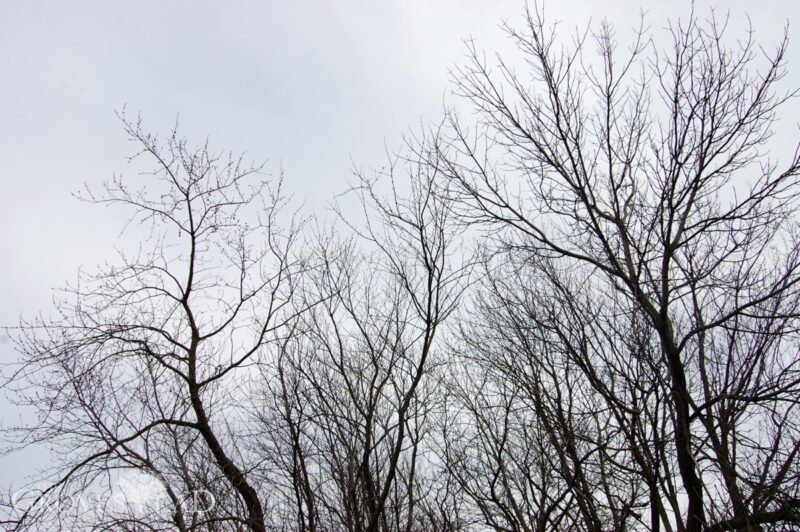
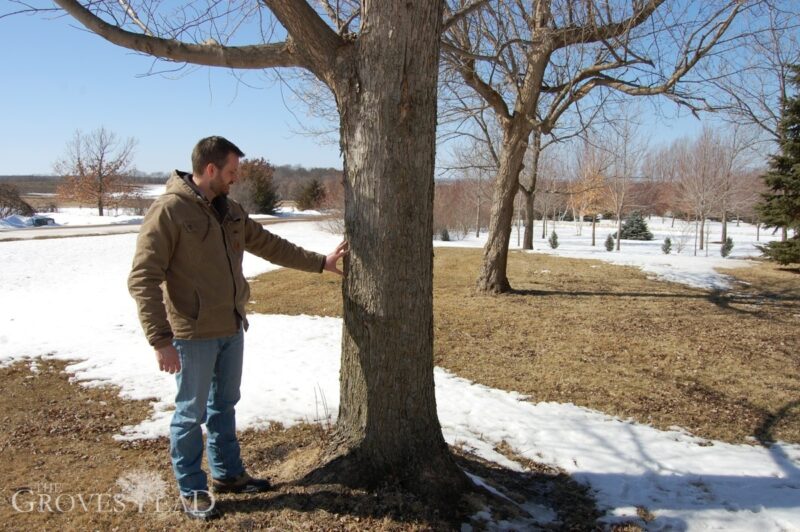
Each tree produces a different amount of sugar content, with “Sugar” Maple being the highest. Higher sugar content is desirable because it means less water needs to be evaporated to produce syrup. Our Silver Maples are almost as good as Sugar Maples, on average producing 1 gallon of syrup for 30 gallons of sap (3-4% sugar content).
When to tap trees and for how long
Sap begins to flow during late Winter when temperatures rise above freezing. For us, this means sometime in March. I’ve found the best setup for sap runs is freezing temperatures overnight and above freezing temperatures during the day, for several days in a row. If you see that setup in the forecast, it’s a good time to get out and tap your trees.
The actual season can last anywhere from 2 weeks to 2 months, again depending on the weather. You basically have until the tree starts budding. Once that happens, the flavor of the syrup will be tainted and won’t taste good (known as “buddy sap”). If the weather turns cold after the sap beings to flow, this will inhibit leaves from forming and prolong the season.
There’s a chapter in Laura Ingalls Wilder’s Little House in the Big Woods, entitled “Sugar Snow”. A thick snow falls late into Spring and Laura is excited because means the season will be prolonged and there will be more sugar that year.
A tip for selecting trees
Here’s something I was surprised to learn: not all the maple trees you tap will produce sap. In any given year, only about half my trees ever produce sap. I still don’t understand why. They appear to be healthy and clearly sap is getting to the leaves. I keep trying different tap placements, but it doesn’t seem to matter. Some trees just won’t produce well. On the other hand, you’ll find some trees to be abundant producers. I’ve got two trees that produce more sap than 10 other trees combined.
This year I tried something different. Since my spouts are limited, I drilled holes in all my trees but didn’t hammer in the spouts until after they began to drip.
That way I’m not wasting spouts on trees that will never produce.
What to do with the sap
Every day I check the bags. I empty anything over 1/2 full into a 5-gallon bucket then store it in a cool place until I have enough to evaporate. Once I have 20 or so gallons collected, I’ll fire up the evaporator and spend several hours boiling it down.
It’s important not to let the sap sit for too long or it can begin to spoil. A few days is fine, but anything more than that should be evaporated or stored in a refrigerator.
Does it hurt the tree?
No. As long as the tree is large enough to support tapping, the holes you drill will fill in after you remove the spouts.
Just make sure not to drill in the same place each year.
Any trees that are at least 12 inches in diameter can be safely tapped. Larger trees over 20 inches can support 2 taps, and 27 inches or larger can support 3 taps.
And just to prove that collecting sap is not harmful, take a look at these pictures from a maple tree we tapped this afternoon.
If you don’t tap a tree, it will likely leak sap anyway. This tree was quite literally bursting at the seams. The tip of every branch was dripping with sap. I was getting rained on while standing under this tree.
When we tapped the tree to add spouts, it immediately started gushing sap. I wouldn’t be surprised to find full bags in the morning.
That covers the basics and I hope answers most of the questions about tree tapping and maple sugaring. In my next post I’ll show the step-by-step process of actually tapping the tree and collecting sap.







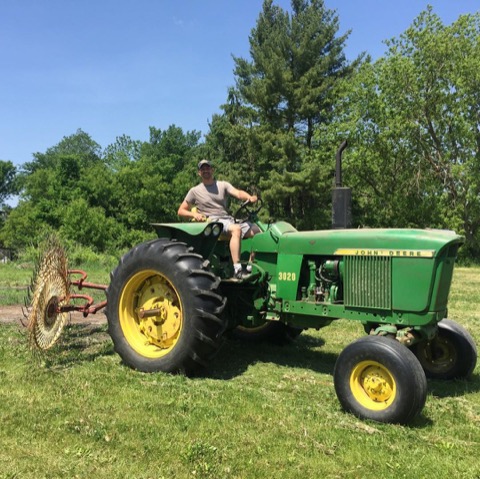
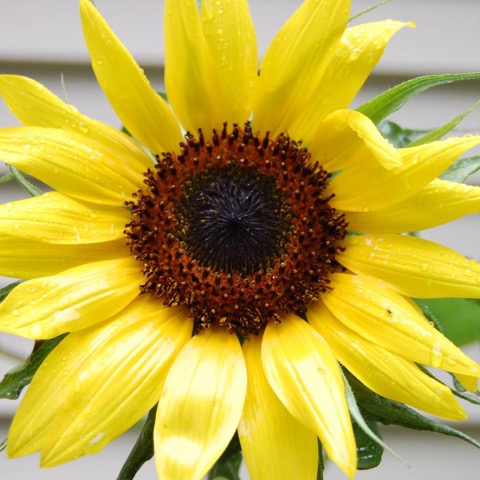

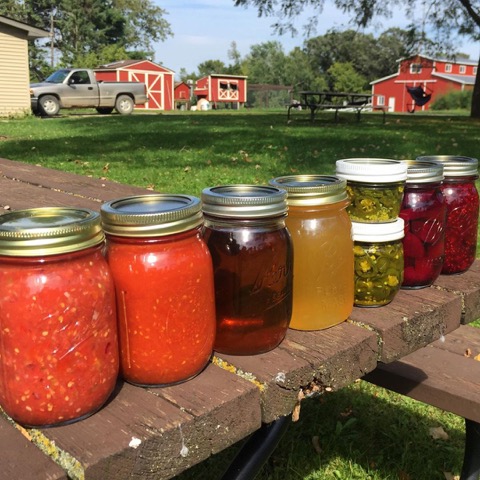
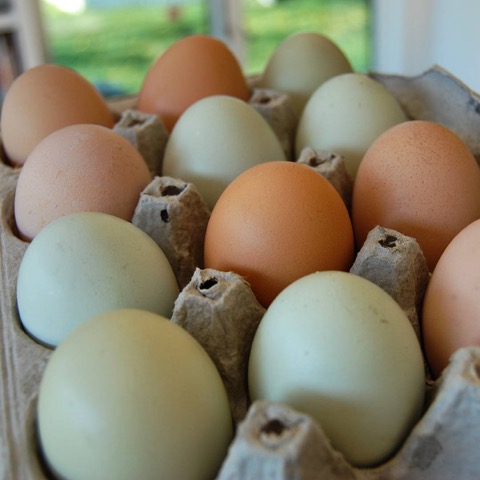

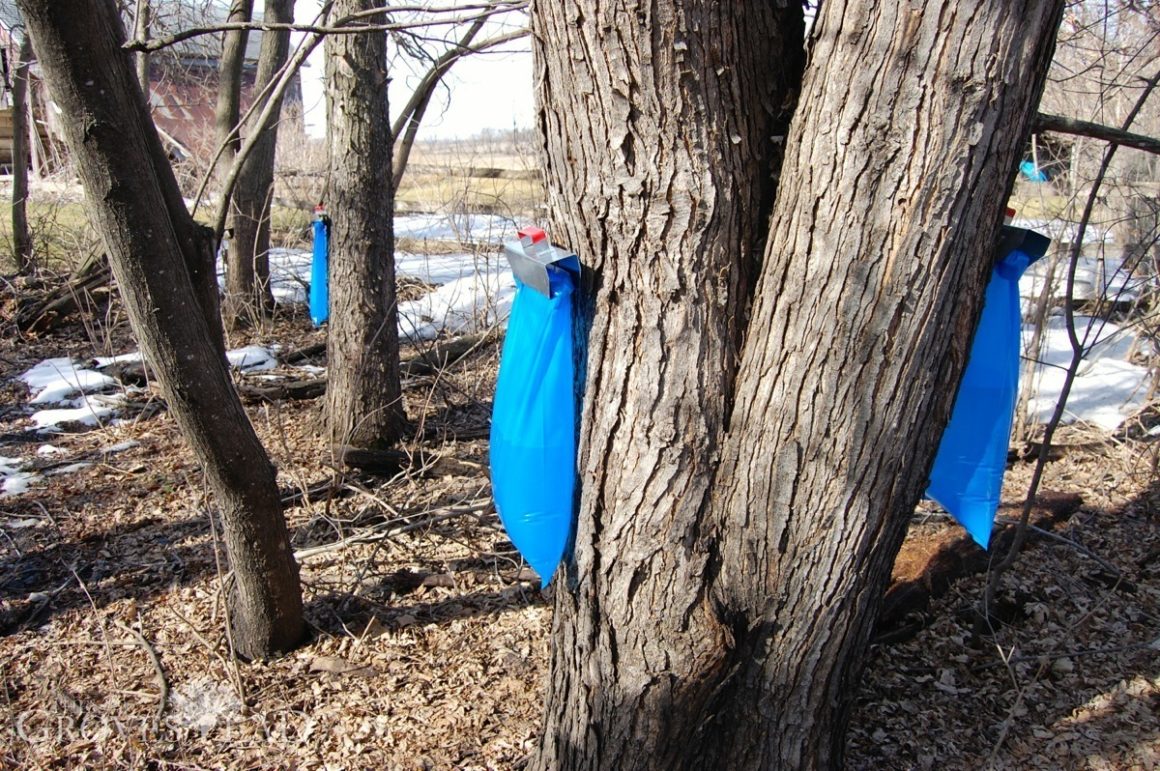
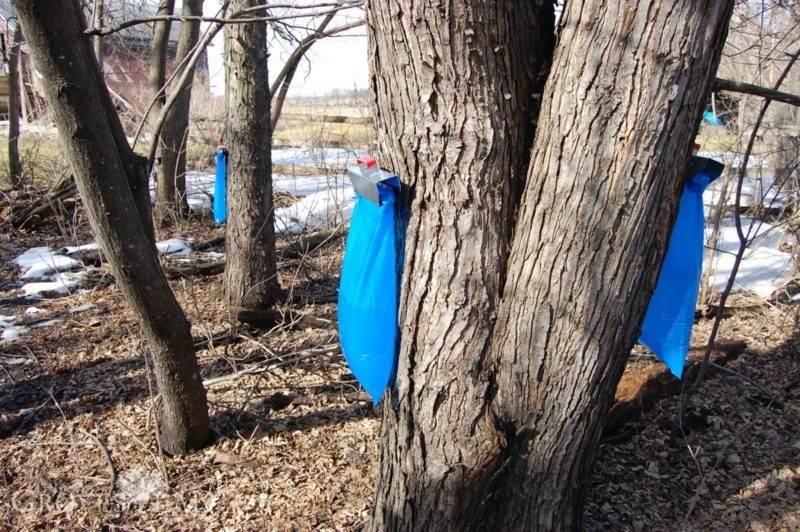
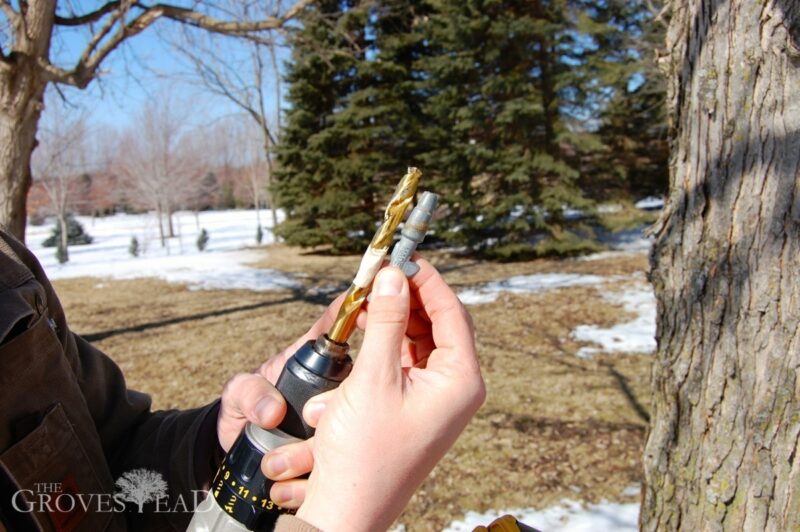
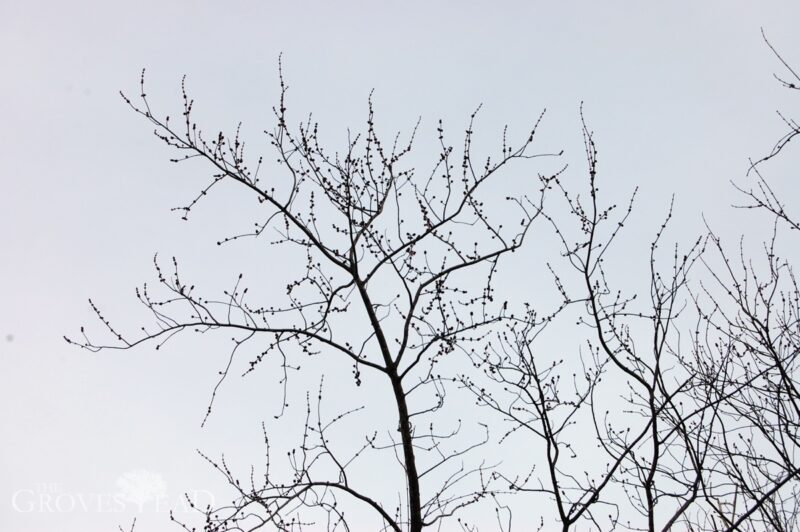
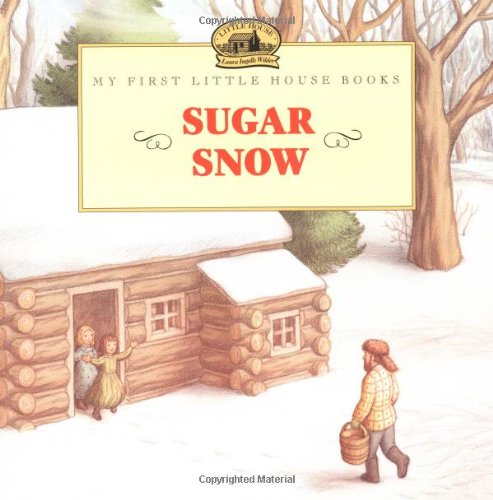
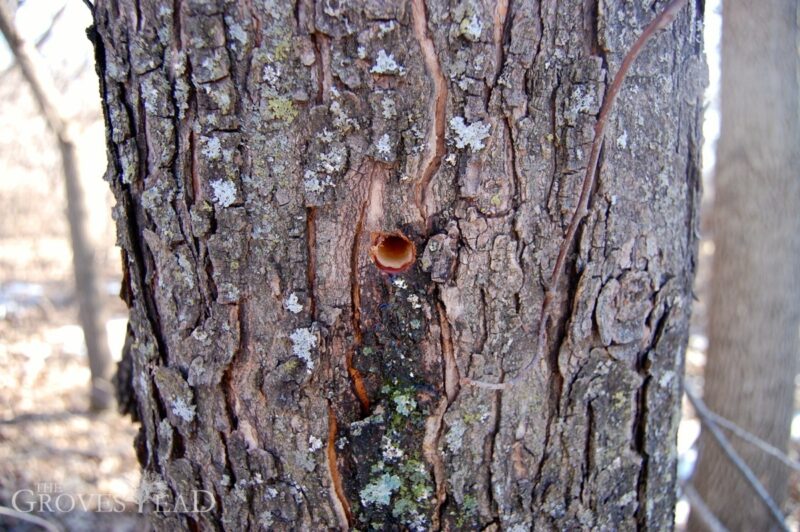
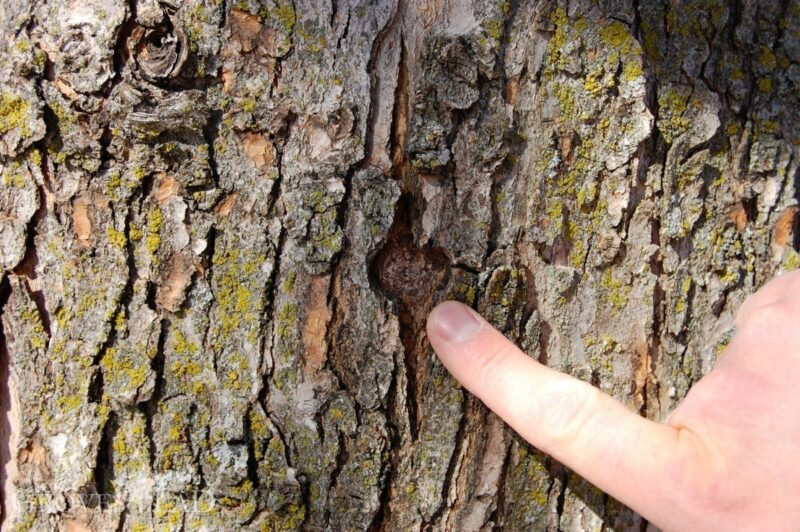
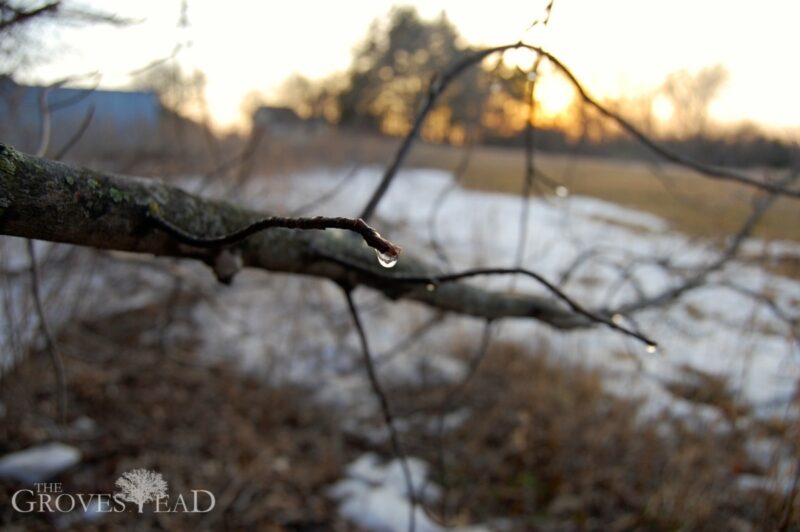
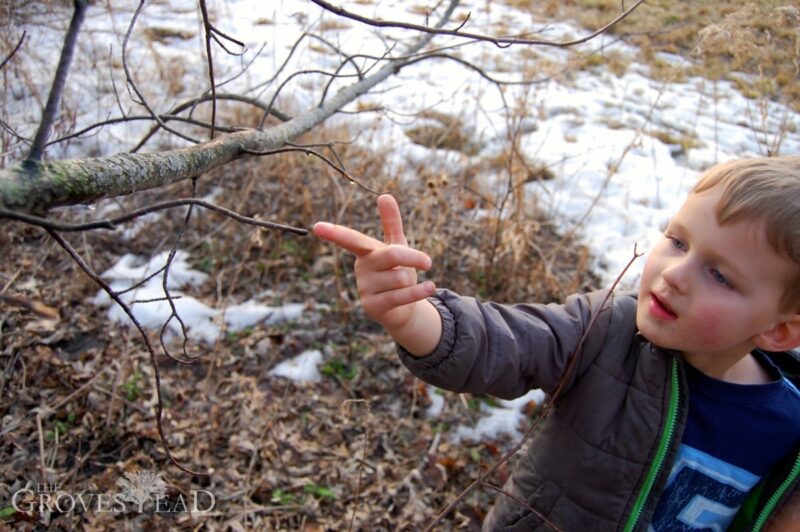
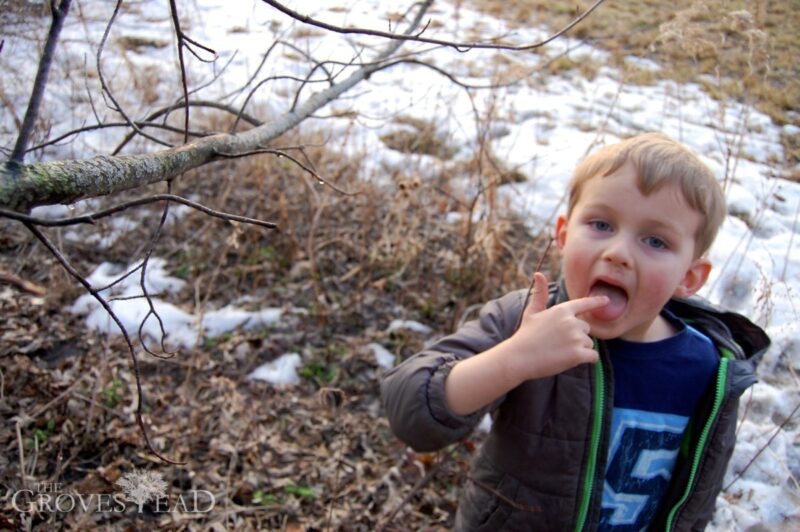
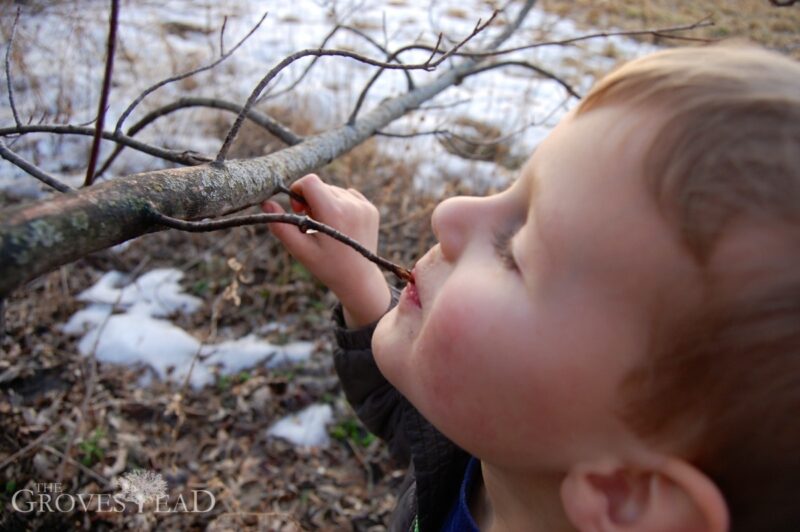

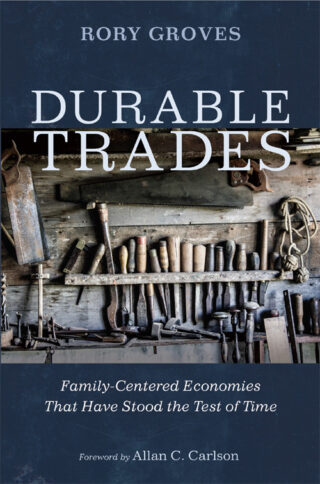
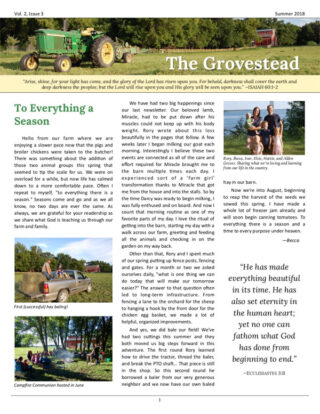
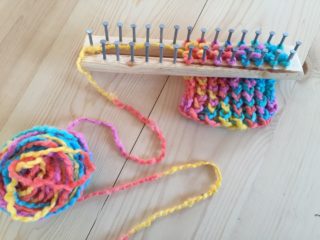
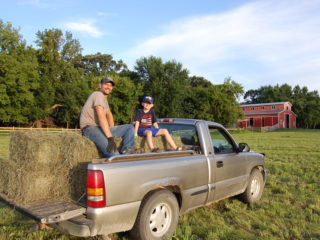
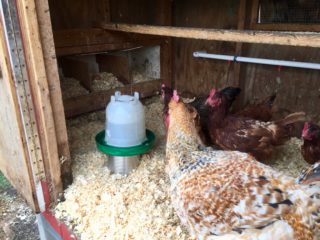
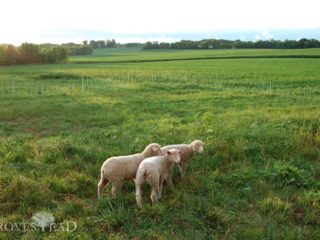
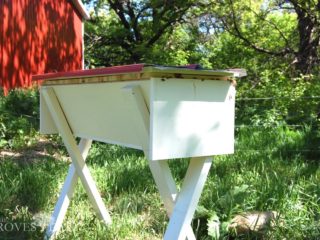
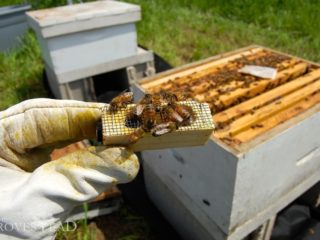
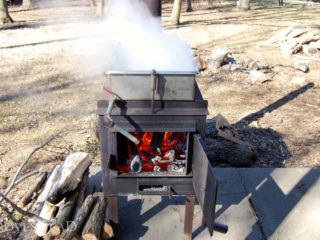
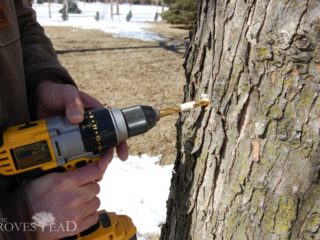
3 comments